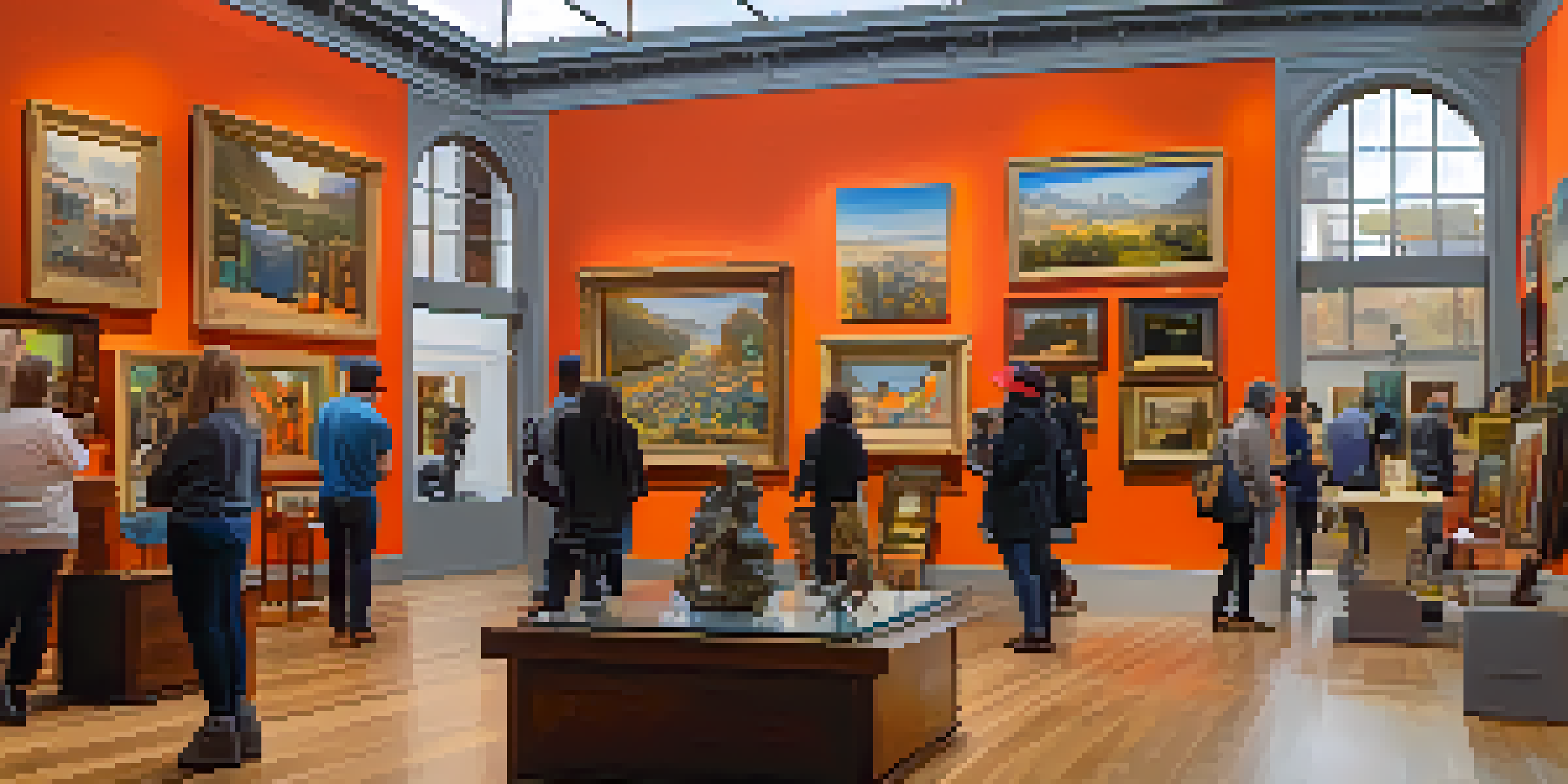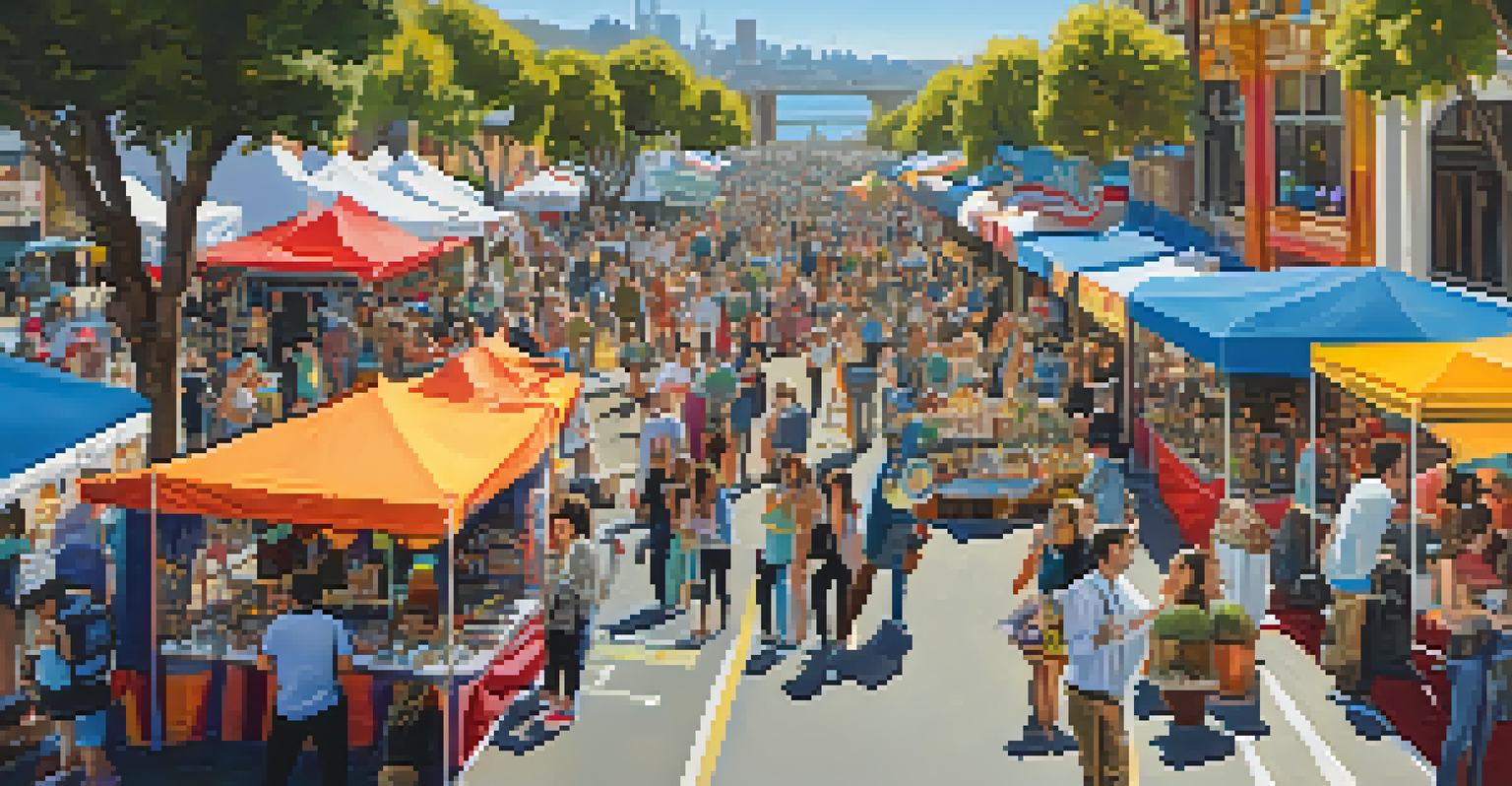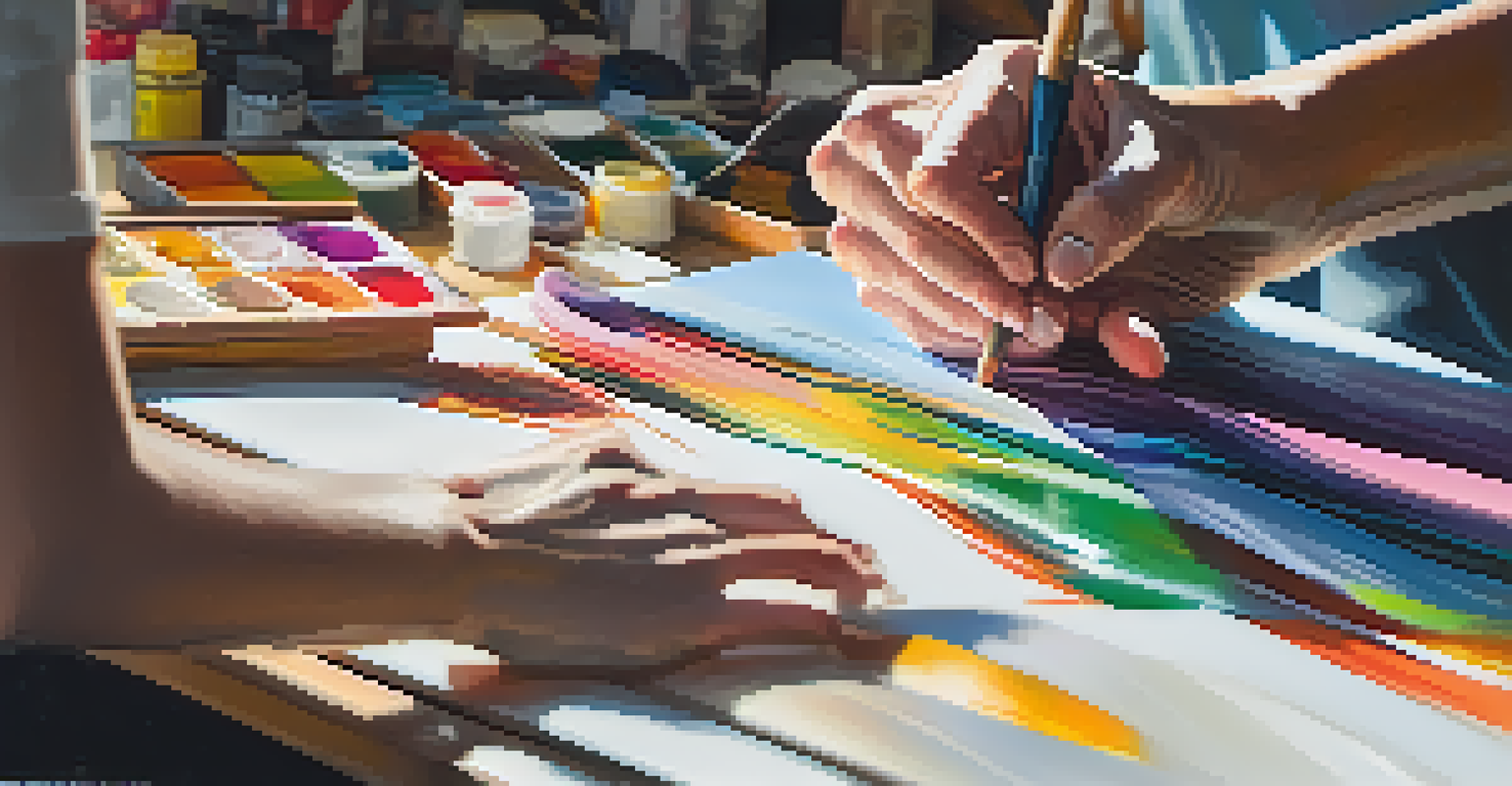The Evolution of Art Galleries in San Francisco’s History

The Birth of Art Galleries in San Francisco
San Francisco's journey into the art world began in the mid-19th century, around the time the Gold Rush brought an influx of people and culture. Early galleries were often modest spaces, showcasing local talent and eclectic styles reflective of the city's diverse population. These early establishments laid the groundwork for what would become a vibrant arts scene, attracting artists and collectors alike.
Art is not what you see, but what you make others see.
One of the first notable galleries was the San Francisco Art Association, founded in 1871. This organization played a crucial role in promoting local artists and hosting exhibitions, fostering a community that celebrated creativity. As more galleries opened, they began to reflect the changing tastes and interests of the city's inhabitants, from traditional landscapes to avant-garde installations.
The 1906 earthquake was a turning point, destroying many structures, including galleries. However, this disaster also ignited a spirit of resilience and innovation among artists and gallery owners, pushing them to rebuild and rethink how art could be displayed and appreciated in the city.
Modernism and the Rise of Avant-Garde Galleries
The early 20th century saw the rise of modernism, which significantly influenced San Francisco's art galleries. Artists began to experiment with new styles and mediums, moving away from traditional representations. Galleries like the SFMOMA opened their doors to showcase these innovative works, helping to cement San Francisco's reputation as a hub for avant-garde art.

During this period, the Beat Generation also emerged, bringing a wave of creativity that permeated the city's art scene. Galleries began to feature experimental works, often challenging societal norms and expectations. This era was marked by a sense of freedom and exploration, as artists pushed boundaries and gallery owners took risks in their selections.
Art Galleries Shape Community Identity
San Francisco's art galleries have evolved into community hubs that foster dialogue, creativity, and collaboration among residents.
As the modernist movement flourished, so did the diversity of voices within the galleries. This inclusivity allowed for a richer tapestry of artistic expression, giving rise to movements that reflected the social and political climate of the time.
The Impact of Technology on Art Galleries
The advent of technology has profoundly changed the landscape of art galleries in San Francisco. With the rise of digital platforms, galleries began to explore online exhibitions, making art more accessible to a global audience. This shift not only expanded the reach of local artists but also invited international talent to showcase their work in the Bay Area.
Every artist dips his brush in his own soul, and paints his own nature into his pictures.
Social media platforms like Instagram have become vital tools for galleries to promote exhibitions and engage with audiences. Artists and galleries can now share their work instantly, creating a dynamic dialogue that transcends geographical boundaries. This new form of interaction has revitalized the way people experience art, making it more interactive and inclusive.
However, this technological evolution also presents challenges, such as the need for galleries to maintain their unique identity in a crowded online space. Balancing the traditional gallery experience with digital innovations has become crucial for staying relevant in a fast-paced world.
The Role of Art Galleries in Community Building
Art galleries in San Francisco have evolved beyond mere exhibition spaces; they now serve as community hubs that foster dialogue and collaboration. Many galleries host events, workshops, and talks that engage the public and encourage participation in the arts. This shift towards community involvement has made art more approachable for everyone, not just art aficionados.
By providing a platform for local artists to connect with their audience, galleries help cultivate a sense of belonging and pride within the community. Collaborative exhibitions and partnerships with local organizations further enhance this connection, allowing art to reflect the unique stories and challenges of San Francisco residents.
Technology Redefines Art Engagement
The rise of digital platforms and social media has transformed how galleries connect with audiences, making art more accessible and interactive.
The importance of art as a tool for social change has also gained traction, with galleries showcasing works that address pressing issues like inequality and environmental concerns. This approach not only amplifies marginalized voices but also invites conversations that can lead to positive change within the community.
The Influence of Globalization on Local Galleries
Globalization has had a significant impact on San Francisco's art galleries, introducing a myriad of cultural influences. As artists from around the world converge in the city, galleries have the opportunity to showcase a diverse range of artistic expressions. This melting pot of ideas enriches the local art scene and broadens the perspectives of both artists and audiences.
Many galleries now curate exhibitions that highlight international artists, creating a dialogue between local and global narratives. This integration not only fosters appreciation for diverse art forms but also challenges the notion of what it means to be an artist in a globalized world. It encourages local artists to explore beyond their immediate surroundings, drawing inspiration from different cultures.
However, this globalization also raises questions about cultural appropriation and authenticity in art. It is essential for galleries to navigate these complexities thoughtfully, ensuring that they support and respect the cultures they represent while celebrating the richness of diversity.
The Future of Art Galleries in San Francisco
Looking ahead, the future of art galleries in San Francisco is poised for continued evolution. The ongoing integration of technology, community engagement, and global perspectives will shape how galleries operate and connect with their audiences. As the art world adapts to changing societal norms and preferences, galleries must remain agile and innovative to stay relevant.
Emerging trends like virtual reality and immersive experiences are already making their way into galleries, offering audiences new ways to interact with art. This shift could redefine the gallery experience, making it more experiential and participatory, ultimately attracting a broader audience.
Global Influences Enrich Local Art
Globalization has introduced diverse cultural perspectives to San Francisco's galleries, enhancing the local art scene while challenging notions of authenticity.
In this rapidly changing environment, the importance of nurturing local talent and fostering inclusivity will remain paramount. By prioritizing community relationships and embracing diversity, San Francisco's galleries can continue to thrive as vital cultural institutions for generations to come.
Conclusion: A Living History of Art Galleries
The evolution of art galleries in San Francisco is a testament to the city's resilience and creativity. From humble beginnings to a vibrant contemporary scene, these spaces have adapted to reflect the changing cultural landscape. They not only showcase art but also foster connections among artists, collectors, and the community.
As we look back on the history of these galleries, it's clear that they have played an essential role in shaping the city's identity. They serve as a mirror reflecting the diverse voices and experiences of the people who call San Francisco home.

In essence, San Francisco's art galleries are a living history, constantly evolving and redefining what art means to its community. As they continue to grow and transform, one thing remains certain: the spirit of creativity and collaboration will always thrive in this dynamic city.